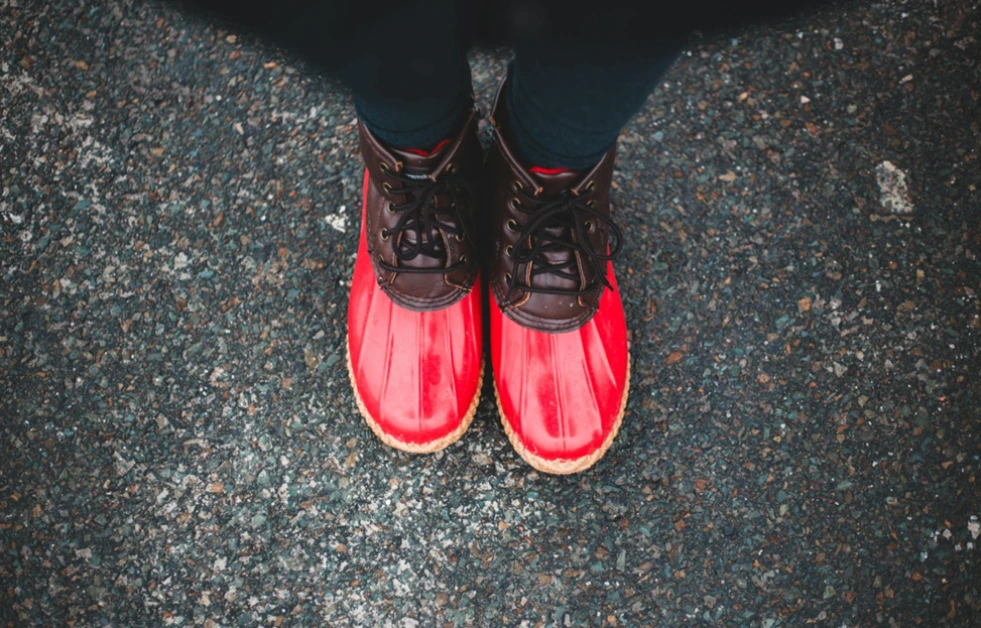
What to Wear in Ireland in Each Month?
Ireland’s weather is like your most fickle friend – grand one minute and pure mad the next!
We all know the struggle of picking what to wear when Ireland’s weather can’t make up its mind from one day to the next!
Whether you’re a local or just visiting Ireland for the first time, knowing what to wear for the ever-changing Irish climate is really important.
The right clothing can make all the difference between enjoying the stunning Irish landscapes or feeling miserable in the rain.
This guide will walk you through what to wear in each month in Ireland, helping you stay comfortable while exploring ancient castles, wandering through vibrant cities, or having the craic at a local pub.
From the bitter winds of January to the “grand stretch in the evenings” of summer, we’ve got you covered with practical advice for every month. So. Let’s begin!
What to Consider When Deciding What to Wear in Ireland?
Pack for all Seasons

Ireland’s unpredictable weather means you might experience multiple seasons in a single day. Bring versatile clothing options regardless of when you visit—even pack a warm jumper for summer trips.
Consider your Climate Perspective

Your home climate affects how you’ll perceive Irish weather. Visitors from colder regions often find Irish winters quite mild, while those from tropical areas might need extra layers during what locals consider summer.
Master the Art of Layering

The most practical approach to Irish weather is wearing multiple layers that you can add or remove as conditions change throughout the day. This simple strategy ensures you’re comfortable no matter what weather surprises Ireland delivers.
Also Read: What’s the Best Time of Year to Visit Ireland
What to Wear in Ireland in Each Month?
Months of Summer Season (May, June, July, August)
Ireland’s summer weather is very unpredictable, so packing requires a full thought process. May brings mild temperatures around 15°C with frequent showers. You’ll need light layers and a waterproof jacket. The countryside turns lush green during the month of May.
June gets warmer with the temperature reaching 18°C. Days grow longer with more sunshine, but rain remains possible. Pack light clothes with a cardigan for cooler evenings.
July is typically warm with an average temperature of 15.5°C. The weather can shift quickly between sunny spells and scattered showers. T-shirts and shorts work well, but always keep a light jacket with you as well.

August maintains the warmth at about 15.2°C with occasional late summer rain. The days start getting shorter, but it’s still pleasant for outdoor activities.
For all summer months, bring a mix of short-sleeve tops and long-sleeve options. Pack 2-3 pairs of trousers or jeans. Shorts and summer dresses are good for warmer days. Always include a light waterproof jacket and a warmer layer like a sweater or cardigan.

Comfortable walking shoes are also important for exploring Ireland. Consider bringing sandals for warmer days and different footwear for evenings out.
Don’t forget accessories like sunglasses and sunscreen – the Irish sun can be surprisingly strong when it appears. A hat offers protection from both sun and light rain. If planning beach visits, swimwear is worth packing.
The key to comfort in Ireland during summer is layering. The weather can change several times in a single day. Mornings might be cool, afternoons warm, and evenings chilly again. Being prepared with adaptable clothing ensures you’ll enjoy Ireland’s beautiful summer season whatever the weather brings.
Months of Winter Season (November, December, January, February)
Ireland’s winter months from November to February are generally cold, wet, and often windy. In November, cold and wet weather arrives with average temperatures around 7.5°C.
December brings wet, wintry conditions with highs of 10°C and lows dropping to 3°C. January continues with cool, wet, and windy weather, averaging about 5.5°C. February remains very wintry with temperatures ranging from 2°C to 8°C.
During these winter months, days become noticeably shorter. The sun rises late between 8 am and 9 am and sets early between 4 pm and 5 pm. This means less daylight for sightseeing and activities. The weather can feel quite dreary during the winter season in Ireland.

For your winter clothing in Ireland, layering is important. Pack a couple of short-sleeved shirts or vests as base layers. Include two long-sleeved shirts for added warmth. Bring two sweatshirts or sweaters to layer over your shirts. Pack 2-3 pairs of pants like jeans, trousers, or leggings. In addition, at least four pairs of thick winter socks to keep your feet warm.
A warm, waterproof winter jacket is absolutely necessary for Ireland’s wet winter conditions. Choose appropriate winter boots or shoes that can handle rain and occasional sleet.

Also, don’t forget accessories like a winter scarf, waterproof gloves, and a waterproof winter hat to protect against the cold. Surprisingly, sunglasses are also useful for the low winter sun that can be quite bright when it appears.
This clothing combination will help you stay warm and dry during Ireland’s challenging winter weather while still being comfortable for indoor activities where heating is usually adequate.
Months of Shoulder Season (March, April, September, October)
Ireland’s weather varies through the months of shoulder season (March, April, September, and October). Each month brings its own climate challenges. Packing correctly will help you stay comfortable during your Irish adventure.
March in Ireland remains cold with temperatures reaching around 10°C (50°F) during the day and dropping to about 4°C (40°F) at night. The days stay relatively short. You’ll need warm layers and rain protection for the frequent showers.
April brings milder conditions but don’t be fooled. Rain still falls regularly across the country. Temperatures average about 8.6°C (47.5°F). The weather becomes more unpredictable with sunny spells quickly giving way to rain.

September offers pleasant conditions with temperatures around 13.2°C (55.8°F). This makes it one of the more comfortable shoulder season months. You’ll still need rain gear as showers can appear without warning.
October turns wetter and windier. The temperature drops to about 10.2°C (50.4°F). The days grow noticeably shorter with sunrise coming later and sunset arriving earlier. Expect crisp mornings and damp afternoons.
For clothing during these months, again focus on layering. Pack a few short-sleeved shirts and several long-sleeved options. Bring 2-3 warm sweaters or sweatshirts for added warmth. Include 2-3 pairs of pants like jeans or trousers. A waterproof jacket is absolutely necessary for daily outings.

Your footwear matters greatly in Ireland’s damp climate. Pack winter boots or waterproof shoes for rainy days. Bring comfortable walking shoes for drier periods. Also, several pairs of thick socks to keep your feet warm and dry.
Don’t forget accessories like sunglasses for bright spells between showers. A warm hat and light gloves protect against cold winds. A light scarf adds warmth without bulk. Consider a lightweight dress or shirt with a cardigan for nicer evenings out.
Remember that Irish weather changes quickly. You might experience all four seasons in a single day. Layering allows you to adjust your clothing as conditions shift throughout the day. Waterproof outer layers protect your inner clothing from the frequent rain.



